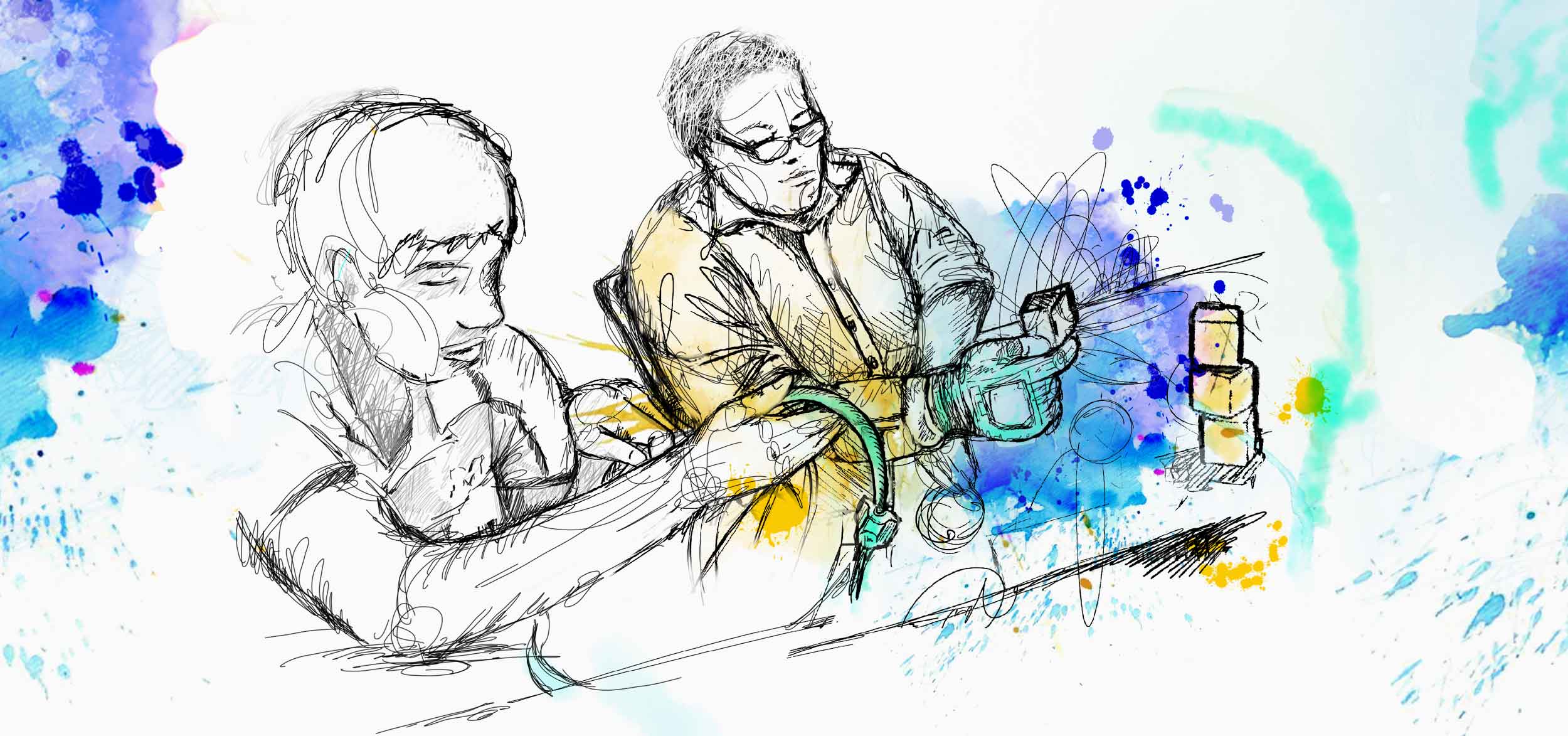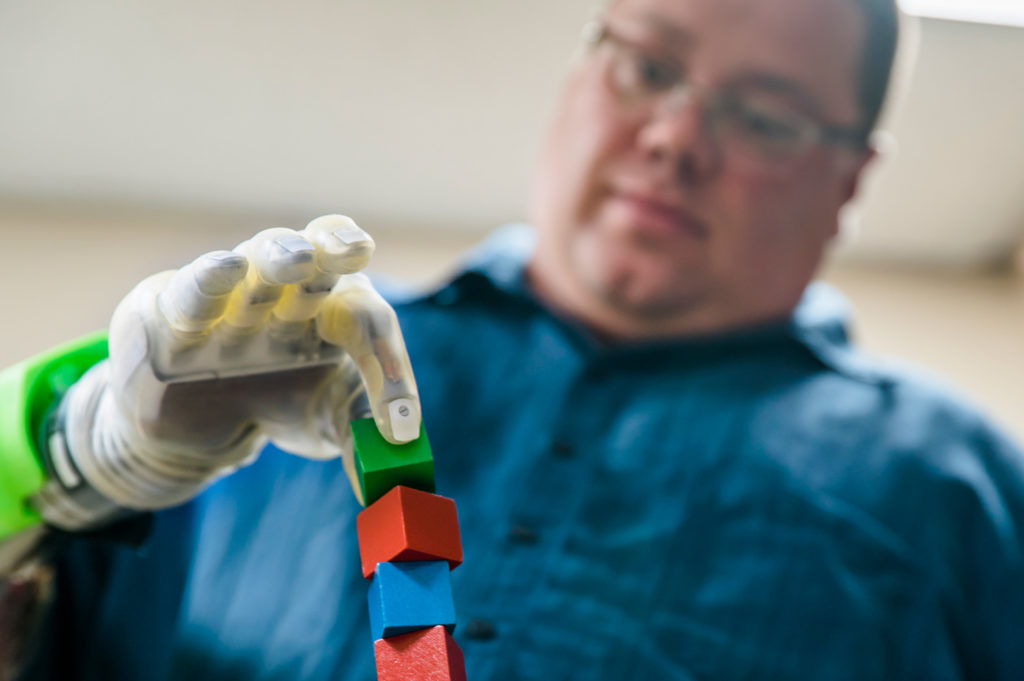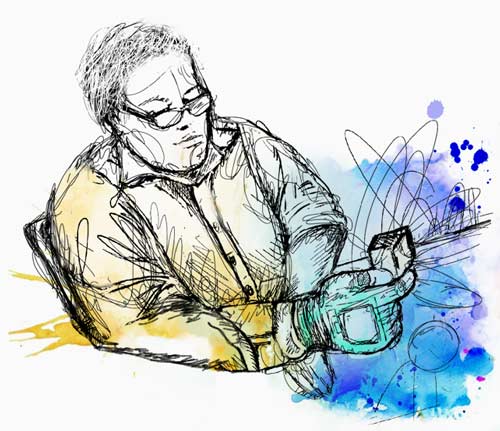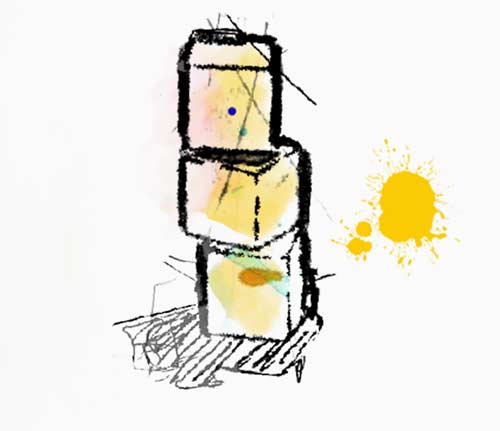
Mind-controlled prosthetics
U-M engineers and doctors pioneer a major advance to help improve quality of life for amputees.
By combining machine learning algorithms and a surgical solution that dramatically amplifies faint neural signals, Michigan Engineering experts have enabled intuitive, real-time mind control of the most advanced robotic hands on the market. Working directly with patients and doctors, researchers applied a people-first approach that reduces pain, remains stable for years and doesn’t require training.

“With about 15 minutes of data, we train our algorithm and we start running online,” says Cindy Chestek, research co-lead and Michigan Engineering associate professor of biomedical engineering. From there, subjects can try controlling the robotic hand. “And they can do it on the first try,” she says. The approach is a far cry from other prosthetics, which are less intuitive and require more training to use. “The learning is in the algorithms, not in the people,” she says.
Their new approach centers on the Regenerative Peripheral Nerve Interface (RPNI)—a small graft of muscle tissue surgically attached to the end of a severed nerve in an amputee’s arm. While other neural interfaces are harmful to nerves, the RPNI promotes healthy nerve growth and acts as a bioamplifier, converting faint neural signals sent from the brain into large, recordable, muscle signals.
This approach not only results in a more intuitive experience and greater levels of control for patients, but also impedes the growth of painful neuromas at the severed ends of nerves, reducing the need for chronic pain medication, repeated surgical procedures, and an inability to use prosthetics due to pain levels.

Another exciting branch of this work has been finding a way to not just receive signals from the brain via the RPNI, but also to send signals back and provide sensation for the participant, which Sussex has been testing out.
“We can actually modulate the signal properties and move sensation from one side of her hand to the other. So she feels like it’s moving,” said Deanna Gates, an associate professor of kinesiology and biomedical engineering. “And in another participant, when we stimulated the RPNIs, he was able to improve performance by getting stimulation during movement.”
The convergent research team, which includes experts from Michigan Medicine, began collaborating with prosthetic device companies to help future devices accommodate even finer movements.
“It’s going to be a ways from here, but we’re not going to stop working on this until we can completely restore able-bodied hand movements,” said Chestek. “That’s the dream of neuroprosthetics.”
